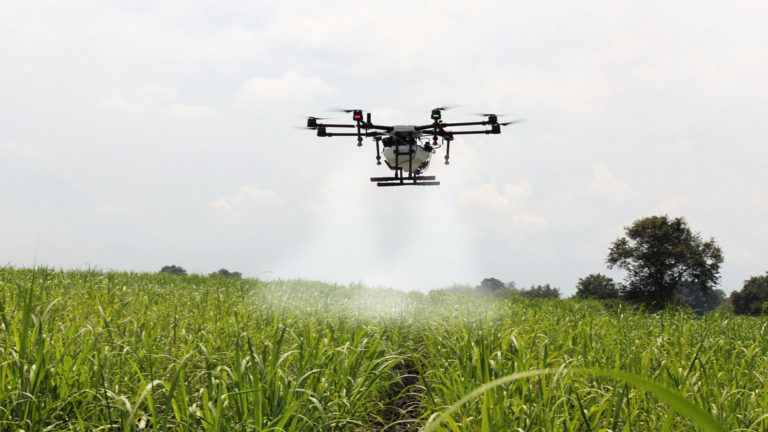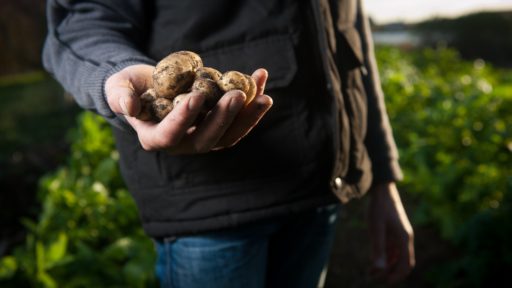Agritech: The oldest industry meets the latest technology

- What is agritech?
- Information technology in agriculture
- Genetic engineering
- Vertical farming
- What are the advantages of modern technology in agriculture?
- What are the disadvantages of modern technology in agriculture?
- Why invest in agritech?
- What are the insurance implications of agritech?
What is agritech?
Precision agriculture is a farming discipline underlined by sustainability and advanced modern technology. In an era when the human population is ballooning and greenhouse-gas emissions are approaching a destructive level, agritech (a combination of agriculture and technology) helps farmers deliver better food quality, environmental sustainability, and profitability. Through technological and operational innovation, the agricultural sector is discovering ways to reduce labour, waste and the carbon footprint of our food.
Information technology in agriculture
Modern farming is about harnessing the power of information technology to gather and process data that can be used to flag up problems, highlight performance patterns, and regulate resources. Smart technology is being embraced by farmers who use cameras, microphones, motion sensors, spatial technology, and biometric trackers to collect information about livestock and crops. Agritech equipment is also about automation, which reduces labour, time, and error margin.
Let’s have a look at a few examples of digital technology in agriculture.
Drone
Use of a drone is becoming increasingly standard practice in agriculture today. Carrying GPS technology, geographic information systems (GIS) and cameras, drones gather huge amounts of data that can be processed in real time or stored for future analysis. Pests, soil quality, irrigation, and fertility are some of the factors measured through drone technology.
Smart ear tag
A smart ear tag is basically an activity tracker for cattle. Behavioural and biometric data from an individual animal can be collected and used to identify stress, hormone imbalance, malnutrition, or infection. Illness can be detected early which can lower the costs of repeated treatment or death loss.
Imaging spectrometers
All organic and inorganic bodies have a spectral signature, which refers to the amount of light energy that they absorb and reflect. A spectrometer picks up a crop’s spectral signature and keeps a record. If the crop is attacked by pests, the area’s spectral image will be altered by the spectral signatures of insects, bacteria, or fungi.
Imaging spectrometers provide detailed information about the invasive species, its range, and its lifecycle. Armed with this data, farmers can select the appropriate treatment and limit it to necessary areas. This equipment is, however, extremely expensive to buy and maintain.
Automated milking
Robotic milkers have been used in dairy farms since the early 1990s, and over the years this piece of agritech farm machinery has evolved into a sophisticated system of cattle husbandry.
A cow chooses to enter the milking unit, driven by the need to relieve the pressure of a full udder and lured by appealing food. Each cow is fitted with an electronic identification tag, and as she comes to the automated gate of the milking unit, a sensor reads her ID tag. In the milking shed the cow is milked as she eats the tasty food that lured her there. If a cow attempts to enter the milking unit too soon after her last milking, the automated gate won’t allow her to enter.
Other new information technologies in the agricultural sector
- Tractors which are guided by GPS. Distance, speed, direction, and tasks are pre-set.
- Microphones strategically positioned in pig pens to detect coughing, a symptom of respiratory disease.
- Automated weight measurement of pigs by continuous 3D photography.
- Sound recordings of insect pests to identify areas that might need pesticide treatment. Microphones are so sensitive, they can pick up the sounds of insects chewing, flying, and mating.
- Livestock hydration. Water intake can be measured on a shed, pen, or individual level.
Genetic engineering
Another technology trend in agriculture is genetic modification – also known as genetic engineering. Farmers have practised selective breeding for hundreds of years, but the first artificially modified crop was approved and patented in 1994.
Some genetically engineered organisms (GEO) are cisgenic, meaning that they’ve been modified by the addition of genes from the same species or a closely related species – one that could be a natural reproductive partner. Other modifications are transgenic, involving the addition of genes from another genus, family, or even kingdom. Modification can also be subgenic, which means that a gene is made inoperative (gene knockout), or the expression of a gene is reduced (knockdown).
Another common practice in genetic engineering is artificial horizontal gene transfer, whereby genetic material is carried by bacteria – usually one of several species in the genus Agrobacterium.
Vertical farming
Vertical farming is the practice of growing crops indoors, without soil, and stacked vertically. The vertical farm’s footprint is much smaller than that of a traditional farm, meaning less damage to native flora and fauna, and less environmental harm from deforestation. Finely adjusted temperature, light, irrigation, and nutrition allow crop production to continue throughout the year, and a variety of crops can be grown together.
- Hydroponics is the technique of growing crops without soil. Roots are submerged in solutions of nutrients and minerals or supported in soil substitutes.
- Aeroponics is the practice of suspending crops in air chambers, immersed in nutrient-rich aerosol.
- Aquaponics is a system whereby water, nutrients, and other chemicals are exchanged and recycled between an aquaculture (fish farming) environment and a hydroponic environment.
What are the advantages of modern technology in agriculture?
Farming with agritech is economical
Early detection of problems allows farmers to act immediately. Whether the problem is a sick animal, bacterial infection in a crop, or faulty irrigation of a field, an early remedy can prevent the problem from growing.
The precision of technology reduces waste. GPS steering control is incredibly accurate, enabling a farmer to cover every inch of land without double tracking, and ID tags allow an individual animal to be identified as ill, stressed, or an inferior milker. When part of a crop is infested with pests, it can be treated, but healthy areas can be left untreated.
Improving the nutrition value, herbicide resistance, and shelf life of genetically modified foods means less waste and therefore greater profits. Technology also reduces the need for manpower. Automated milking machines, drones, and swine-weighing cameras do the jobs of dozens of people, cutting the costs of farming and producing greater profits.
Because vertical farming isn’t affected by adverse weather conditions and pests, and as crops are grown in a controlled environment, it has the potential for year-round productivity.
Farming with agritech is more sustainable
Without greenhouse gases, there’d be no life on Earth. These heat-retaining atmospheric gases keep the world at the optimum temperature for organic life. However, since 1880, the Earth’s average temperature has risen by 1.09°C, and since the beginning of the Industrial Revolution the concentration of atmospheric carbon dioxide has increased by about 40%.
Vertical agriculture has the potential to produce between four and thirty times more food per square meter than traditional soil-based farming, and when you take into consideration the fact that it might be 20 storeys high, the vertical farm’s land footprint could have the production capacity of 80 to 600 times that of a traditional farm. With a rapidly growing world population and increasing urban development to meet the needs of a growing population, agricultural area per capita is decreasing. Vertical farms could be the answer to food security.
Vertical agriculture consumes comparatively little water – in some cases 90% less than that of traditional farming. A controlled indoor environment means fewer chemical pesticides, and because the farms are frequently located in built-up areas, food miles are reduced.
In technologically advanced farming, precise monitoring and reporting allow farmers to respond early to problems and to gauge the effects of operational changes.
What are the disadvantages of modern technology in agriculture?
The main disadvantage of relying on modern technology in farming is that without it the system fails.
For example, a power cut on a dairy farm means no automated milking machine, and the farm’s infrastructure doesn’t include the manpower to milk the cows. Even if emergency human resources were brought in, the animals would be disturbed by the change in routine and unfamiliar touch.
Complex digital equipment needs specialist maintenance. If the smart technology breaks down, there’s total reliance on a technician to sort it out. This can be expensive and disruptive.
Why invest in agritech?
Historically, the UK is a world leader in agriculture. Today, the UK is among the leaders in agritech innovation – a sector that has robust government support.
The Farming Innovation Programme is allocating millions of pounds in government funding to innovative farming projects in England. The programme is designed to ‘support ambitious projects to transform productivity and enhance environmental sustainability in England’s agricultural and horticultural sectors, whilst driving the sectors towards net zero’.
What are the insurance implications of agritech?
Any agricultural business needs to be protected by insurance. To make sure that you have adequate farm insurance, or to discuss additional cover, give us a call on 01603 218000.
This blog about diversification ideas in farming outlines some of the innovative ways in which landowners are optimising their income and improving the sustainability of their business.




